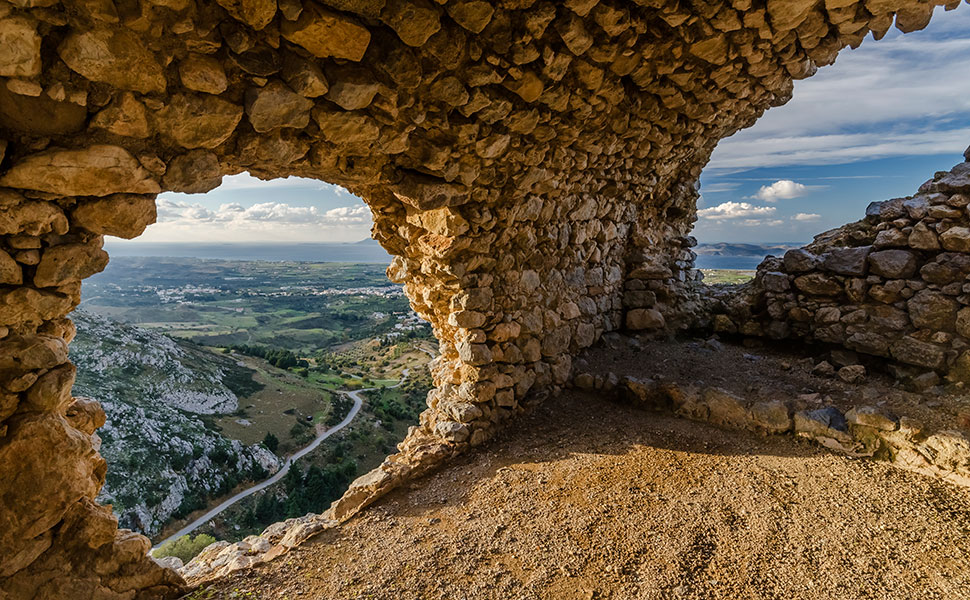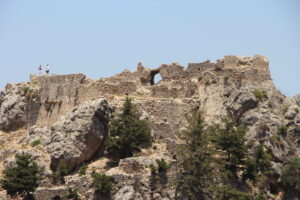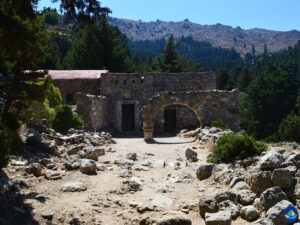Palio Pyli, also known as Old Pyli, is a captivating abandoned settlement nestled on the northern slopes of Mount Dikeos in Kos, Greece. Situated approximately 3 kilometers southeast of the modern village of Pyli, this historical site offers visitors a unique glimpse into the island’s Byzantine past and medieval architecture.
Historical Significance
The origins of Palio Pyli trace back to the 11th century when the Byzantine Empire established a fortified settlement here. Its strategic location, concealed from the sea, provided protection against pirate invasions. The castle, constructed atop a natural rock formation, served as a defensive stronghold and administrative center during the Byzantine and later the Knights Hospitaller periods. The settlement thrived until the early 19th century but was eventually abandoned around 1830 due to a cholera epidemic.
Architectural Highlights
Today, visitors can explore the remnants of the castle and the surrounding village structures. Notable among these are two well-preserved churches: the Church of the Archangels (Asómati Taxiárches Gavriíl ke Miachaíl) and the Church of the Virgin Mary (Panagía ton Kastrianón), both dating back to the 11th century. The architectural style reflects the Byzantine influence, with stone-built structures and intricate frescoes that have withstood the test of time.
Visiting Palio Pyli
Accessing Palio Pyli is relatively straightforward. A paved road leads from the modern village of Pyli to a parking area near the site. From there, a marked trail guides visitors through the ruins up to the castle. The hike is moderately challenging, taking approximately 20 minutes, and offers panoramic views of the surrounding landscape, including the Aegean Sea, the islands of Pserimos and Kalymnos, and even the Turkish coastline on clear days.
It’s advisable to wear sturdy footwear, as the path can be uneven and rocky. Carrying water is also recommended, especially during the warmer months. Along the way, visitors will encounter various ruins, including residential buildings and defensive walls, providing insight into the daily life of the settlement’s former inhabitants.
Nearby Amenities
At the base of the trail, there is a quaint café where visitors can rest and enjoy refreshments while taking in the serene environment. The area is also ideal for photography enthusiasts, offering numerous vantage points to capture the essence of this historical site .
Palio Pyli stands as a testament to the rich history of Kos Island, offering a unique blend of natural beauty and historical intrigue. Whether you’re a history buff, a hiking enthusiast, or simply seeking a peaceful retreat, a visit to Palio Pyli promises an unforgettable experience.










Leave a Comment